Life Science & Chemical Instrumentation Market Size
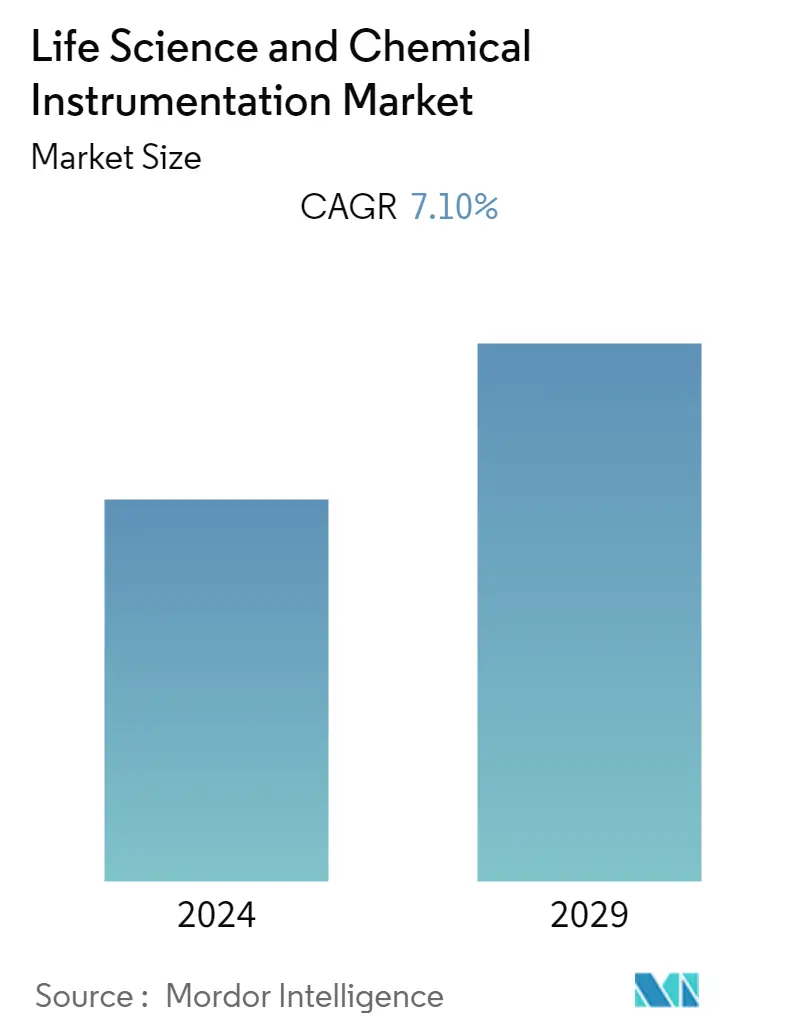
| Study Period | 2021 - 2029 |
| Base Year For Estimation | 2023 |
| CAGR | 7.10 % |
| Fastest Growing Market | Asia-Pacific |
| Largest Market | North America |
| Market Concentration | Low |
Major Players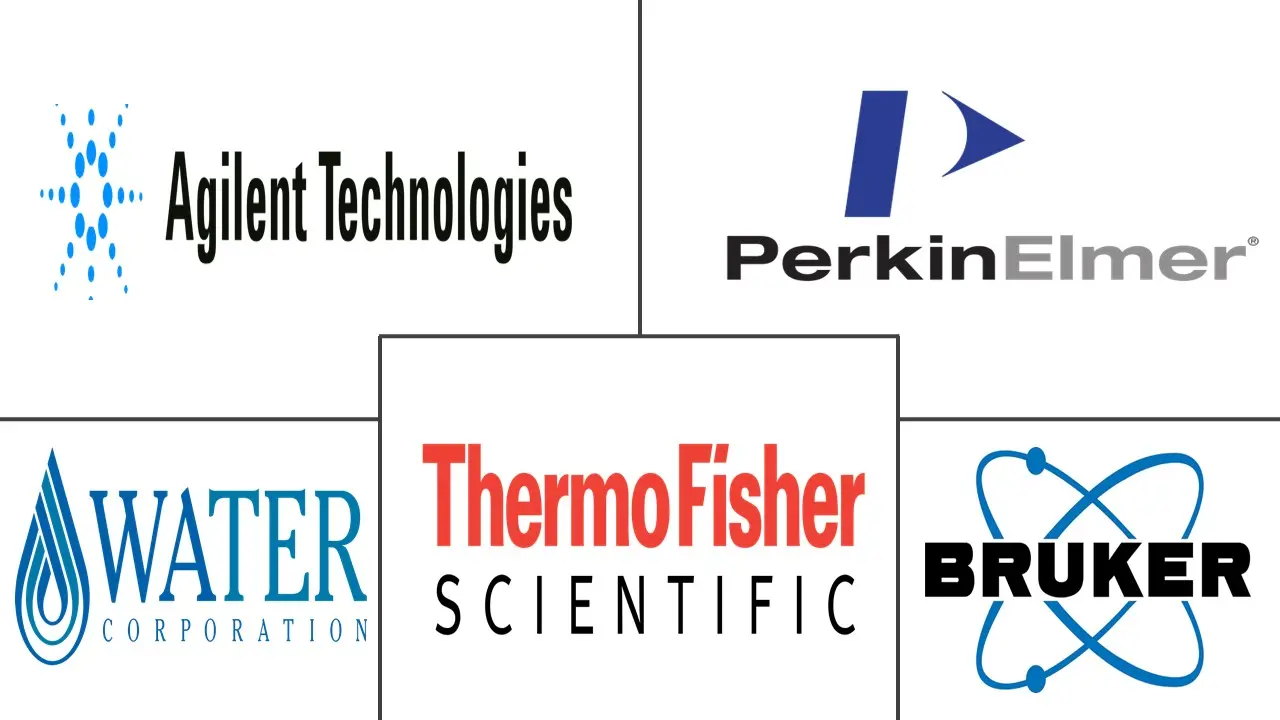
*Disclaimer: Major Players sorted in no particular order |
Life Science & Chemical Instrumentation Market Analysis
The Life Science and Chemical Instrumentation Market is expected to witness a CAGR of 7.1% during the forecast period.
The COVID-19 pandemic had a favorable impact on market growth globally, with the rapid development of diagnostics, expedited regulatory clearances, and increased distribution in many nations to help control the virus's spread. Several diagnostic procedures played a crucial role in detecting COVID-19. Diagnostic companies were continuously coming up with new launches in developing as well as developed countries. For instance, in July 2020, Roche introduced the Cobas 8800 instrument to the National Institute of Cholera and Enteric Diseases in India, and the Cobas 6800 at the National Institute for Research in Reproductive Health in India, to aid with SARS CoV-2 diagnostic testing. Roche's Cobas 6800/8800 systems produce test findings in three and a half hours and offer flexibility, greater operational efficiency, and the fastest time-to-time results. Thus, during the COVID-19 pandemic, the market for life science and the chemical instrument was positively impacted as the demand for these instruments increased during the pandemic. Currently, the market has reached its pre-pandemic nature in terms of demand for instruments and is expected to witness healthy growth in the coming years.
The life science and chemical instrumentation market is primarily driven by the growing R&D activities and the growing burden of diseases worldwide. In addition, the growing investment from the pharmaceutical industry in drug discovery and development is likely to boost the demand for life science instruments for drug validation.
The growing increasing public-private investments in life science research and technological advancements in analytical instruments are driving the market for life science instruments and chemicals. For instance, as per the article published by United Kingdom Parliament in October 2022, the total expenditure on R&D during 2022 was EUR 37.1 billion in the United Kingdom. Moreover, as per the OECD data, pharmaceutical spending as a percentage of GDP in 2021 was highest in Bulgaria, with around 32.4% spent on pharmaceuticals. Thus, growing pharmaceutical spending on research and development activity is expected to boost market growth over the forecast period.
Additionally, the high prevalence of infectious diseases and technological advancements in the field of life sciences and biotechnology support market growth. According to Statistics published by HIV.gov in June 2021, approximately 1.2 million people in the United States had HIV (Human Immunodeficiency Virus), with an incidence rate was 12.6 (per 100,000 population). This suggests that a high incidence of HIV will lead to increased demand for these instruments, thereby boosting market growth. Moreover, the launch of various instruments by the market players supports market growth. For instance, in June 2021, Thermo Fisher Scientific launched Invitrogen Attune CytPix Flow Cytometer, an imaging-enhanced flow cytometer that combines acoustic focusing flow cytometry technology with a high-speed camera.
Thus, all the above-mentioned factors are expected to boost market growth over the forecast period. However, the lack of skilled professionals and the high cost of life science and chemical instrumentation are further impeding the growth of the market.
Life Science & Chemical Instrumentation Market Trends
This section covers the major market trends shaping the Life Science & Chemical Instrumentation Market according to our research experts:
Chromatography Holds the Major Share in Life Science and Chemical Instrumentation Market
Chromatography is an analytical instrument that measures the content of various analytes in a given sample and, in many cases, helps to quantify the analyte. Chromatography is mostly done to analyze compounds that can are in a liquid state, and in the case of gas chromatography (GC), the analytes can be vaporized without decomposition.
It is widely used to test the purity of substances or to separate a mixture into its basic components. The chromatography method is used in many pharmaceutical applications, such as identifying the number of chemicals in drugs. Data from MDPI Journal published in April 2022 stated that the goal of chromatography analysis of any drug is to validate and identify the drug and provide quantitative data, as well as to monitor the course of disease therapy. Chromatography is used to determine the photo components present in various pharmaceutical compounds that are used to treat a variety of diseases, such as cough, asthma, rheumatism, fever, cephalalgia, and ophthalmia. In addition, the increased use of chromatography tests in drug approvals is considered to contribute to the market growth over the forecast period.
Additionally, companies in the market are focusing on launching advanced liquid chromatography systems and components. In June 2021, Waters Corporation launched its new high-performance liquid chromatography (HPLC) - Waters Arc Premier System. The company declared that the new liquid chromatography system could be used for routing testing in various end-use areas, like the pharmaceuticals industry and the academic and materials markets. Moreover, in July 2022, Shimadzu launched its i-Series Plus integrated chromatography system that covers conventional to ultra-fast liquid chromatography analysis. Thus, all the above mentioned factors are likely to drive segment growth over the forecast period.
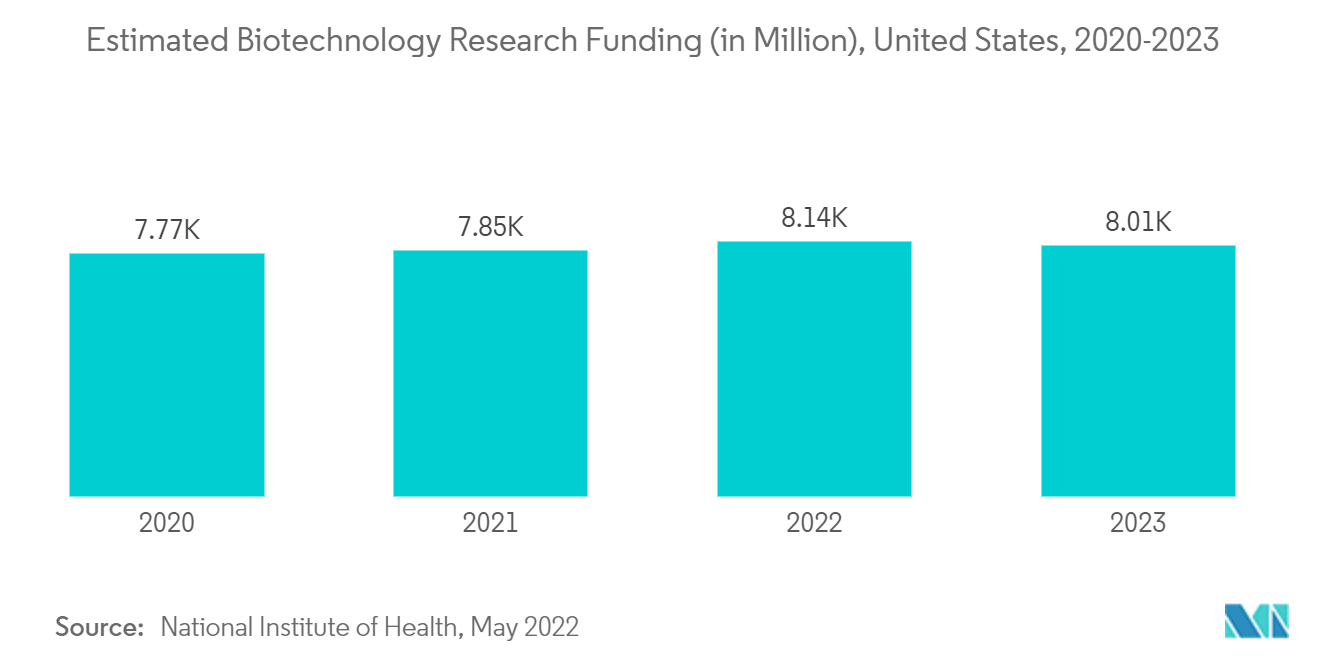
North America Holds the Largest Market Share and is Expected to Maintain the Same during the Forecast Period
In North America, life science and chemical instrumentation technology are used in many applications in the pharmaceutical and biotechnology industry. Chemical instrumentation has proven to be an effective technology for final production testing, pharmaceutical applications, environmental monitoring, and food testing, among others.
Other factors propelling the growth of the North American life science and chemical instrumentation market include the increasing need for drug discovery, the rising prevalence of chronic diseases, and augmented demand for rising food safety concerns. According to the American Cancer Society's 2022 report, there will be an estimated 1.9 million new cancer cases diagnosed and 609,360 cancer deaths in 2022. As per a July 2022 update by the CDC, around 6 in 10 Americans live with at least one chronic disease, and 4 in 10 adults have two or more chronic diseases. Hence, the increasing burden of chronic diseases is expected to propel the R&D activities in the industry and may contribute to the growth of the market studied.
Moreover, the increasing number of R&D activities is contributing to market growth. For instance, as per a 2021 update by the University of North Dakota, the UND Center of Biomedical Research Excellence (CoBRE) in Host-Pathogen interactions (HPI) stated that the National Institutes of Health (NIH) will continue to fund the project through Phase II. The renewal of USD 10.7 million is intended to improve understanding of host responses to viral, bacterial, and parasite infections that cause acute and chronic inflammatory diseases. Hence, growing R&D funding for various life sciences-related research is expected to boost market growth over the forecast period.
Furthermore, product launches by the key market players propel the growth of the market. For instance, in October 2021, Novasep announced the launch of the Hipersep Process M, an HPLC chromatography system designed for the purification of pharmaceutical molecules such as peptides, oligonucleotides, insulin, and other synthetic molecules. This system is designed to improve the workflows in clinical labs. Thus, all the above-mentioned factors are expected to boost the market over the forecast period.
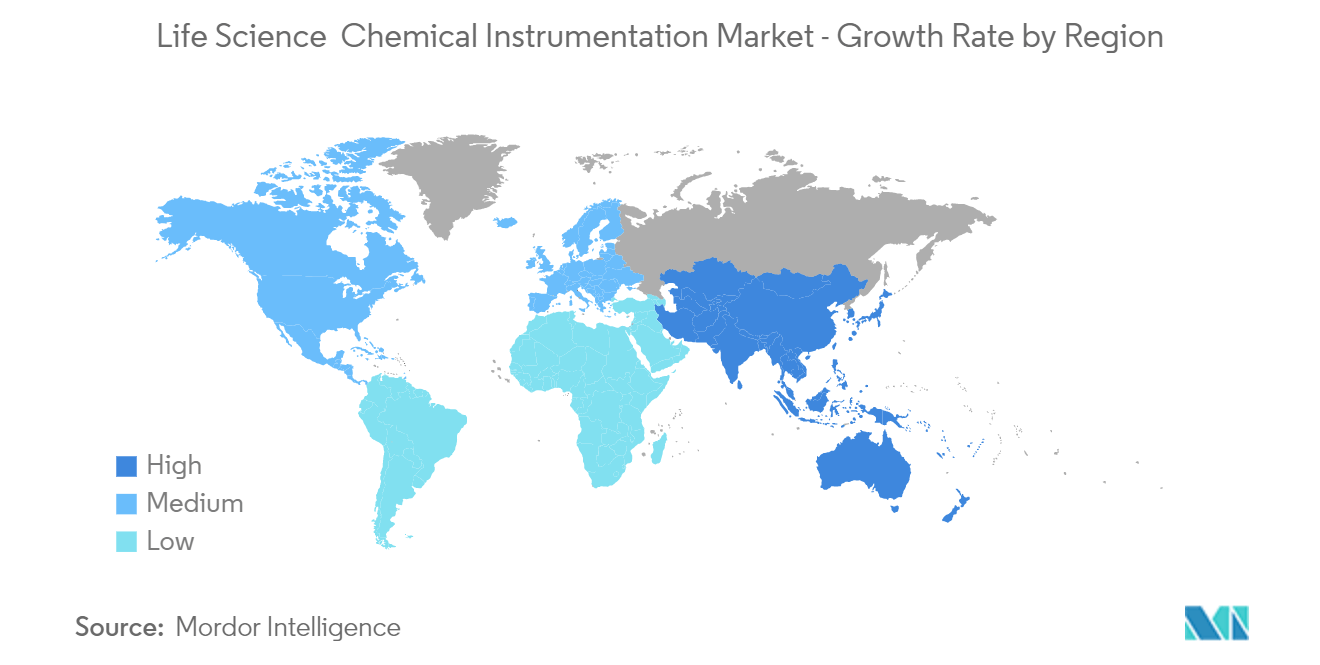
Life Science & Chemical Instrumentation Industry Overview
Market players in the life science and chemical instrumentation market are focusing on the expansion of their product portfolios by adopting inorganic growth strategies such as acquisitions, mergers, and partnerships. Some of the key market players in the market studied include Agilent Technologies Inc., Becton, Dickinson & Company, Bio-Rad Laboratories Inc., Bruker Corporation, Danaher Corporation, and F. Hoffmann-La Roche Ltd.
Life Science & Chemical Instrumentation Market Leaders
-
Agilent Technologies Inc.
-
PerkinElmer, Inc
-
Bruker Corporation
-
Thermo Fisher Scientific Inc.
-
Water Corporation
*Disclaimer: Major Players sorted in no particular order
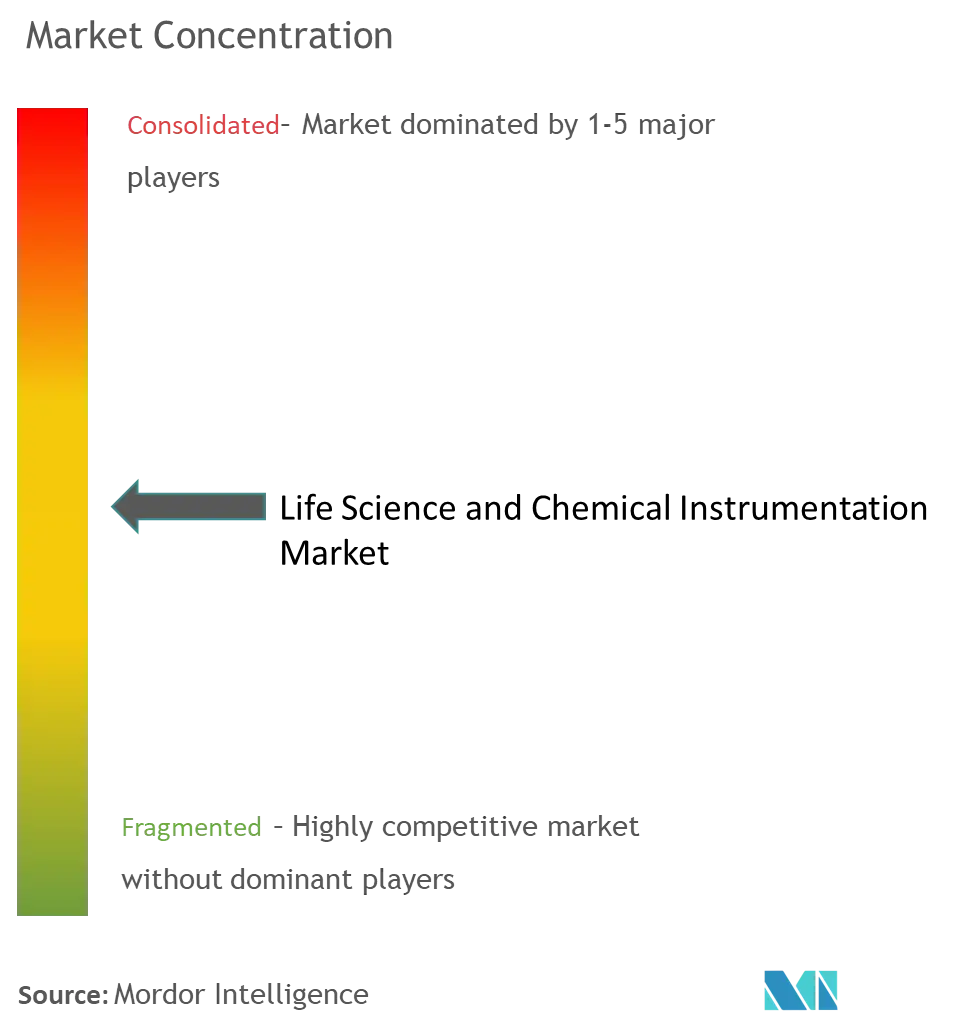
Life Science & Chemical Instrumentation Market News
- Jun 2022: Agilent Technologies launched new liquid chromatography-mass spectrometry (LC-MS) and gas chromatography-mass spectrometry (GC-MS) quadrupole mass spectrometers that the company said will raise the level of built-in instrument intelligence and offer a higher level of instrument diagnostics to maximize system uptime for customers.
- Mar 2022: Shimadzu Europe announced the release of the IRXross Fourier-transform infrared (FTIR) spectrophotometer. This new mid-level FTIR device delivers remarkable top-level performance, including an exceptional S/N ratio, resolution, measurement speed, and ease of use.
Life Science & Chemical Instrumentation Market Report - Table of Contents
1. INTRODUCTION
- 1.1 Study Assumptions and Market Definition
- 1.2 Scope of the Study
2. RESEARCH METHODOLOGY
3. EXECUTIVE SUMMARY
4. MARKET DYNAMICS
- 4.1 Market Overview
-
4.2 Market Drivers
- 4.2.1 Increasing Spending on Pharmaceutical R&D
- 4.2.2 Technological Advancements in Analytical Instruments
- 4.2.3 Increasing Public-Private Investments in Life Science Research
-
4.3 Market Restraints
- 4.3.1 High Cost of the Instruments
- 4.3.2 Lack of Skilled Professionals
-
4.4 Porter's Five Forces Analysis
- 4.4.1 Threat of New Entrants
- 4.4.2 Bargaining Power of Buyers/Consumers
- 4.4.3 Bargaining Power of Suppliers
- 4.4.4 Threat of Substitute Products
- 4.4.5 Intensity of Competitive Rivalry
5. MARKET SEGMENTATION (Market Size by Value - USD million)
-
5.1 By Technology
- 5.1.1 Polymerase Chain Reaction (PCR)
- 5.1.2 DNA Sequencers & Amplifiers
- 5.1.3 Flow Cytometry
- 5.1.4 Spectroscopy
- 5.1.5 Electrophoresis
- 5.1.6 Chromatography
- 5.1.7 Centrifuges
- 5.1.8 Other Technologies
-
5.2 By End Users
- 5.2.1 Hospitals and Diagnostic Centers
- 5.2.2 Pharmaceutical and Biotechnology Companies
- 5.2.3 Contract Research Organization (CRO)
- 5.2.4 Academia and Research Institutes
-
5.3 Geography
- 5.3.1 North America
- 5.3.1.1 United States
- 5.3.1.2 Canada
- 5.3.1.3 Mexico
- 5.3.2 Europe
- 5.3.2.1 Germany
- 5.3.2.2 United Kingdom
- 5.3.2.3 France
- 5.3.2.4 Italy
- 5.3.2.5 Spain
- 5.3.2.6 Rest of Europe
- 5.3.3 Asia-Pacific
- 5.3.3.1 China
- 5.3.3.2 Japan
- 5.3.3.3 India
- 5.3.3.4 Australia
- 5.3.3.5 South Korea
- 5.3.3.6 Rest of Asia-Pacific
- 5.3.4 Middle-East and Africa
- 5.3.4.1 GCC
- 5.3.4.2 South Africa
- 5.3.4.3 Rest of Middle-East and Africa
- 5.3.5 South America
- 5.3.5.1 Brazil
- 5.3.5.2 Argentina
- 5.3.5.3 Rest of South America
6. COMPETITIVE LANDSCAPE
-
6.1 Company Profiles
- 6.1.1 Agilent Technologies Inc.
- 6.1.2 Becton, Dickinson & Company
- 6.1.3 Bio-Rad Laboratories Inc.
- 6.1.4 Bruker Corporation
- 6.1.5 Danaher Corporation
- 6.1.6 F. Hoffmann-La Roche Ltd
- 6.1.7 Illumina Inc.
- 6.1.8 PerkinElmer Inc.
- 6.1.9 Thermo Fisher Scientific Inc.
- 6.1.10 Waters Corporation
- *List Not Exhaustive
7. MARKET OPPORTUNITIES AND FUTURE TRENDS
** Subject To AvailablityLife Science & Chemical Instrumentation Industry Segmentation
As per the scope, instrumentation in life sciences and chemicals addresses different aspects of instrumentation that hold the keys to cutting-edge research and innovative applications. Various kinds of conventional instruments have been used in the life sciences and chemistry fields. Technology for the life sciences and chemistry has advanced tremendously in the past ten years in both the public and private sectors.
The Life Science and Chemical Instrumentation Market is Segmented by Technology (Polymerase Chain Reaction (PCR), DNA Sequencers and Amplifiers, Flow Cytometry, Spectroscopy, Electrophoresis, Chromatography, Centrifuges, and Other Technologies), End User (Hospitals and Diagnostic Centers, Pharmaceutical and Biotechnology Companies, Contract Research Organizations (CRO), and Academia and Research Institutes), and Geography (North America, Europe, Asia-Pacific, Middle-East and Africa, and South America). The market report also covers the estimated market sizes and trends for 17 different countries across major regions globally. The report offers the value (in USD million) for the above segments.
| By Technology | Polymerase Chain Reaction (PCR) | |
| DNA Sequencers & Amplifiers | ||
| Flow Cytometry | ||
| Spectroscopy | ||
| Electrophoresis | ||
| Chromatography | ||
| Centrifuges | ||
| Other Technologies | ||
| By End Users | Hospitals and Diagnostic Centers | |
| Pharmaceutical and Biotechnology Companies | ||
| Contract Research Organization (CRO) | ||
| Academia and Research Institutes | ||
| Geography | North America | United States |
| Canada | ||
| Mexico | ||
| Geography | Europe | Germany |
| United Kingdom | ||
| France | ||
| Italy | ||
| Spain | ||
| Rest of Europe | ||
| Geography | Asia-Pacific | China |
| Japan | ||
| India | ||
| Australia | ||
| South Korea | ||
| Rest of Asia-Pacific | ||
| Geography | Middle-East and Africa | GCC |
| South Africa | ||
| Rest of Middle-East and Africa | ||
| Geography | South America | Brazil |
| Argentina | ||
| Rest of South America |
Life Science & Chemical Instrumentation Market Research FAQs
What is the current Life Science and Chemical Instrumentation Market size?
The Life Science and Chemical Instrumentation Market is projected to register a CAGR of 7.10% during the forecast period (2024-2029)
Who are the key players in Life Science and Chemical Instrumentation Market?
Agilent Technologies Inc., PerkinElmer, Inc, Bruker Corporation, Thermo Fisher Scientific Inc. and Water Corporation are the major companies operating in the Life Science and Chemical Instrumentation Market.
Which is the fastest growing region in Life Science and Chemical Instrumentation Market?
Asia-Pacific is estimated to grow at the highest CAGR over the forecast period (2024-2029).
Which region has the biggest share in Life Science and Chemical Instrumentation Market?
In 2024, the North America accounts for the largest market share in Life Science and Chemical Instrumentation Market.
What years does this Life Science and Chemical Instrumentation Market cover?
The report covers the Life Science and Chemical Instrumentation Market historical market size for years: 2021, 2022 and 2023. The report also forecasts the Life Science and Chemical Instrumentation Market size for years: 2024, 2025, 2026, 2027, 2028 and 2029.
MEA Paper & Paperboard Industry Report
Statistics for the 2024 MEA Paper & Paperboard market share, size and revenue growth rate, created by Mordor Intelligence™ Industry Reports. MEA Paper & Paperboard analysis includes a market forecast outlook 2029 and historical overview. Get a sample of this industry analysis as a free report PDF download.



